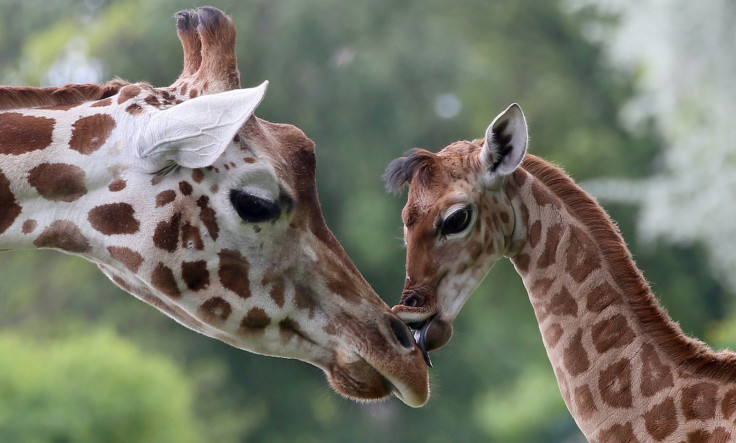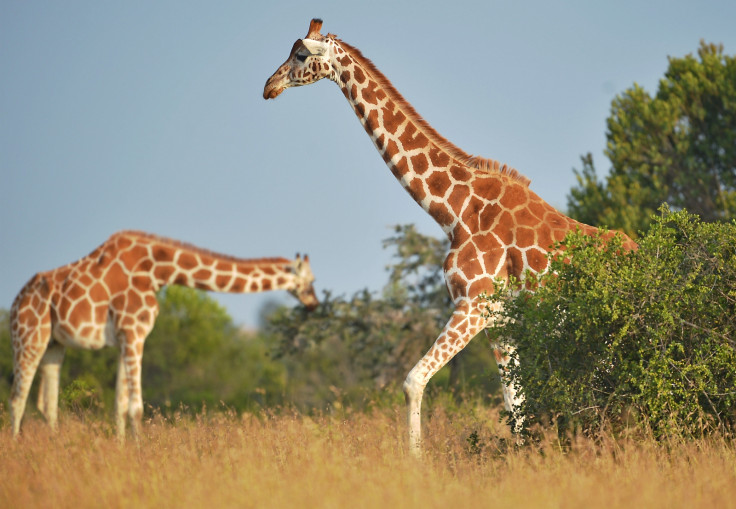Giraffes vulnerable to 'silent extinction' in Africa as population declines by 40% in 30 years
Red List on conservation status of giraffes notes that the decline in numbers in Africa went unnoticed.
The population of giraffes in Africa has declined significantly over the past 30 years putting the world's tallest land mammal on the Red List of endangered species. According to the International Union for the Conservation of Nature (IUCN), giraffe numbers dropped by 40% in what it termed as "silent extinction".
According to reports, there were 152,000 to 163,000 giraffes in the wild in 1985, whereas in 2015, the number fell sharply to 98,000. The international organization has blamed the decline in population to habitat loss, illegal poaching, expansion of farmland in Africa and civil unrest in many part of the continent.
For the first time, the IUCN Red List – which is the world's main authority on the conservation status of species – classified the giraffe as "vulnerable" to extinction on current trends. Until now, giraffe populations were rated as being of "least concern". It noted that the decline in their numbers in large parts of sub-Saharan Africa went largely unnoticed.
"While giraffes are commonly seen on safari, in the media and in zoos, people – including conservationists – are unaware that these majestic animals are undergoing a silent extinction," Julian Fennessy, specialist on giraffes at IUCN said.
The iconic animal, which is widely spotted in southern and eastern Africa, are being threatened due to expansion of farm land to feed the rapid growth of human populations. According to the IUCN, it was most high in conflict areas such as South Sudan.
"In these war torn areas, in northern Kenya, Somalia, and Ethiopia in the border area with South Sudan, essentially the giraffes are war fodder, a large animal, extremely curious that can feed a lot of people," Fennessy said.
Craig Hilton-Taylor, head of the Red List told Reuters: "People are competing for fewer and fewer resources and the animals are worse off ... especially with civil strife." He added that climate change too has aggravated the issue to a worrisome level.
A recent study has identified giraffes as four different species, as opposed to the animal being previously recognised as a single species divided into several sub-species. But for preparing the latest Red List, the IUCN used the traditional definition – one species with nine sub-species.
It said five of the sub-species had its population plunging, while one remained stable.

"The species in southern Africa, those numbers are increasing by two to three times over the last three decades. But when you come up through East Africa, those numbers have plummeted some by up to 95% of the population in the case of the Nubian giraffe, in the last three decades alone," Fennessy said.
Besides giraffes, the Red List included the African grey parrot as an endangered species, which is known for its skill of mimicking human speech. The bird was previously classified as "vulnerable".
The list now contains over 85,000 species in total, of which more than 24,000 are threatened with extinction. Additionally, 11% of 700 plus newly-recognised species of birds were added to the list as being on the edge of extinction. One bird, the Antioquia wren in Colombia has been listed as "endangered" as more than half of its habitat is threatened due to a proposed hydro-electric dam.
"Many species are slipping away before we can even describe them," said IUCN director general Inger Andersen. "This IUCN Red List update shows that the scale of the global extinction crisis may be even greater than we thought."

© Copyright IBTimes 2025. All rights reserved.





















